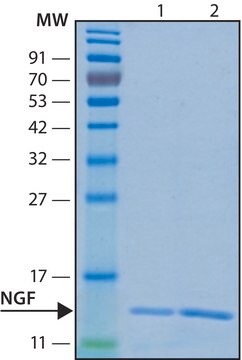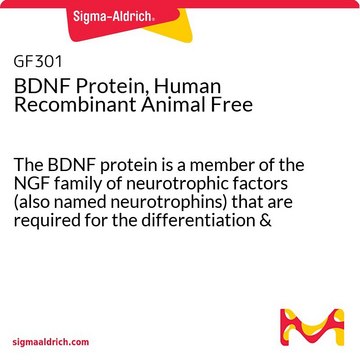N0513
Nerve Growth Factor-7S from murine submaxillary gland
lyophilized powder, suitable for cell culture
Synonym(s):
NGF-7S
About This Item
Recommended Products
product name
Nerve Growth Factor-7S from murine submaxillary gland, NGF-7S, lyophilized powder, suitable for cell culture
biological source
mouse
Quality Level
form
lyophilized powder
potency
2-250 ng/mL ED50/EC50
quality
endotoxin tested
mol wt
protein 130 kDa
packaging
pkg of 0.1 mg
technique(s)
cell culture | mammalian: suitable
impurities
≤10
color
white
UniProt accession no.
storage temp.
−20°C
Gene Information
mouse ... Ngf(18049)
General description
Application
- PC12
- Dorsal root ganglia (DRG) obtained from chick embryos of either sex (Gallus gallus)
Biochem/physiol Actions
Physical form
Preparation Note
Analysis Note
Storage Class Code
11 - Combustible Solids
WGK
WGK 3
Flash Point(F)
Not applicable
Flash Point(C)
Not applicable
Personal Protective Equipment
Certificates of Analysis (COA)
Search for Certificates of Analysis (COA) by entering the products Lot/Batch Number. Lot and Batch Numbers can be found on a product’s label following the words ‘Lot’ or ‘Batch’.
Already Own This Product?
Find documentation for the products that you have recently purchased in the Document Library.
Customers Also Viewed
Our team of scientists has experience in all areas of research including Life Science, Material Science, Chemical Synthesis, Chromatography, Analytical and many others.
Contact Technical Service









